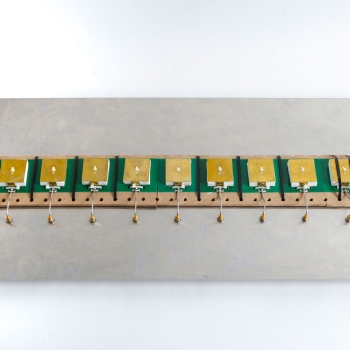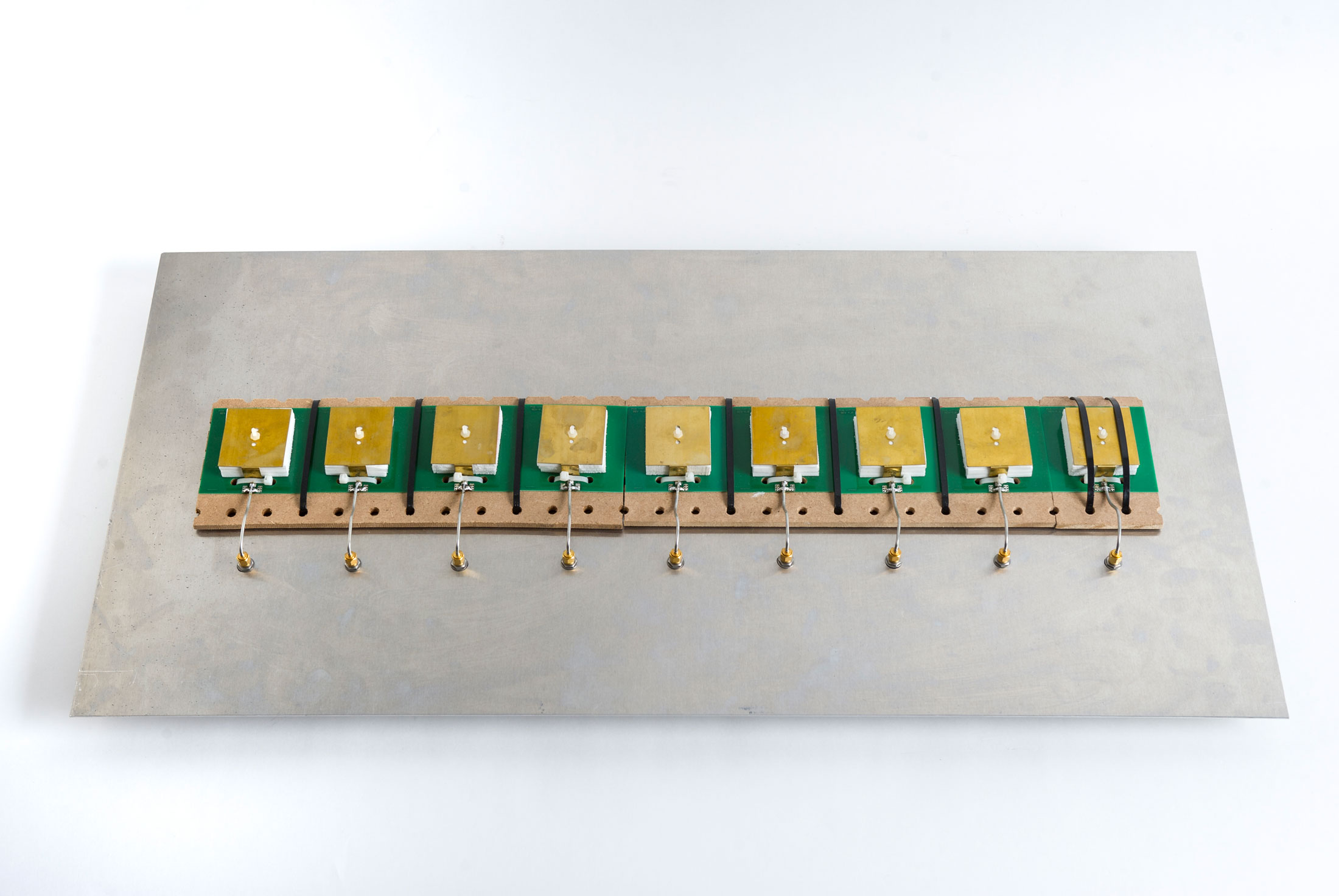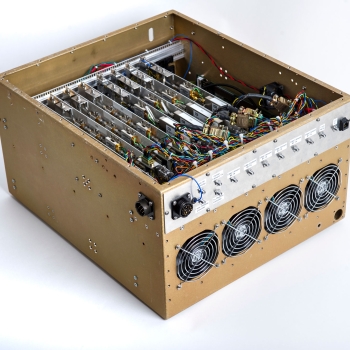Aperture-Level Simultaneous Transmit and Receive Phased Array

Enabled by Lincoln Laboratory's novel phased array antenna architecture, wireless networks can connect more devices and achieve higher data rates by simultaneously transmitting and receiving on the same frequency. This architecture doubles the devices' efficiency and reduces the time for processing a message between send and receive modes. The improved performance is achieved by the use of in-band full-duplex technology on the phased array antenna.
Problem: Inadequate Wireless Capacity
Statista, an international research company specializing in market data, estimated that in 2021, 22.2 billion devices worldwide were connected via wireless networks. The wireless network system that supports all this connectivity is significantly strained, especially at locations where large numbers of people are using their devices at the same time. Current cellular technology, even the 5G upgrade, struggles to provide the high data rates and wide-area communication range needed for the escalating demand.
Solution: Innovative Antenna for Simultaneous Transmit/Receive

In-band full-duplex (IBFD) technology that enables systems to transmit and receive on the same frequency at the same time has the potential for increasing the capacity and capability of wireless networks. However, IBFD systems have relied on antennas that radiate omnidirectionally and thus limit the range and number of devices a system can accommodate. Engineers at Lincoln Laboratory demonstrated IBFD technology that, for the first time, can operate on phased array antennas, which direct communication signals to targeted areas, expanding the distances that the RF signals reach and significantly increasing the number of devices connected to a single node. A demonstration system operated at 2.4 to 2.5 GHz, and a new prototype capable of 2.7 to 3.5 GHz operation is in development.
Designers of simultaneous transmit-and-receive systems must incorporate techniques to mitigate the self-interference generated by these dual-function systems. Lincoln Laboratory addressed this need by using adaptive digital beamforming to reduce the coupling between transmit and receive antenna beams and adaptive digital cancellation to remove residual self-interference.
Benefits
- Unique combination of adaptive digital beamforming and adaptive digital cancellation mitigates self-interference generated by simultaneously transmitting and receiving on the same frequency
- System architecture supports a large number of devices operating in the same location, such as at sporting events and concerts
- Capability to transmit over distances of 60 miles (more than twice that of current systems) translates to a decreased need for base stations and lower network costs
- Phased array system can be adapted to the size requirements of base stations or handheld devices
Additional Resources
U.S. Patent 10,419,062
More Information
I. Cummings et al., "Aperture-Level Simultaneous Transmit and Receive with Digital Phased Arrays," IEEE Transactions on Signal Processing, vol. 68, 21 January 2020.
2019 R&D 100 Award winner
